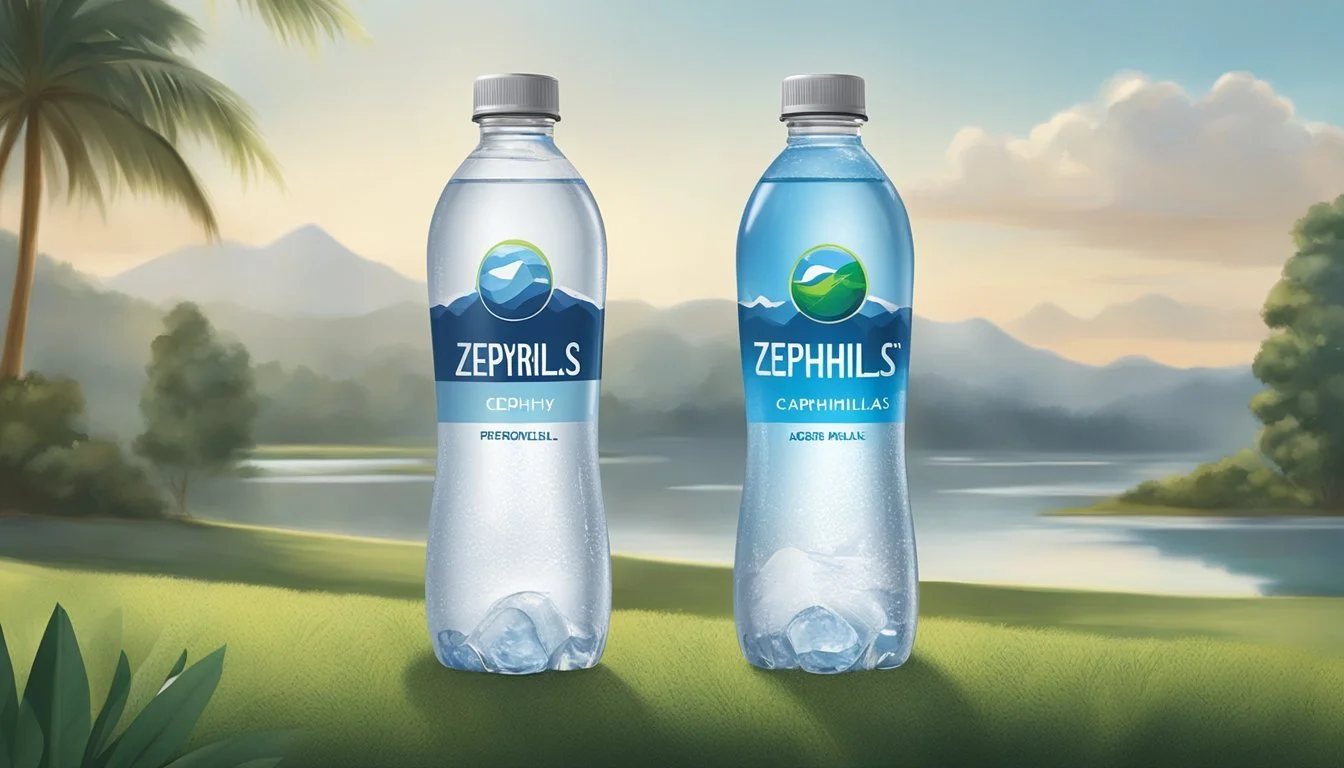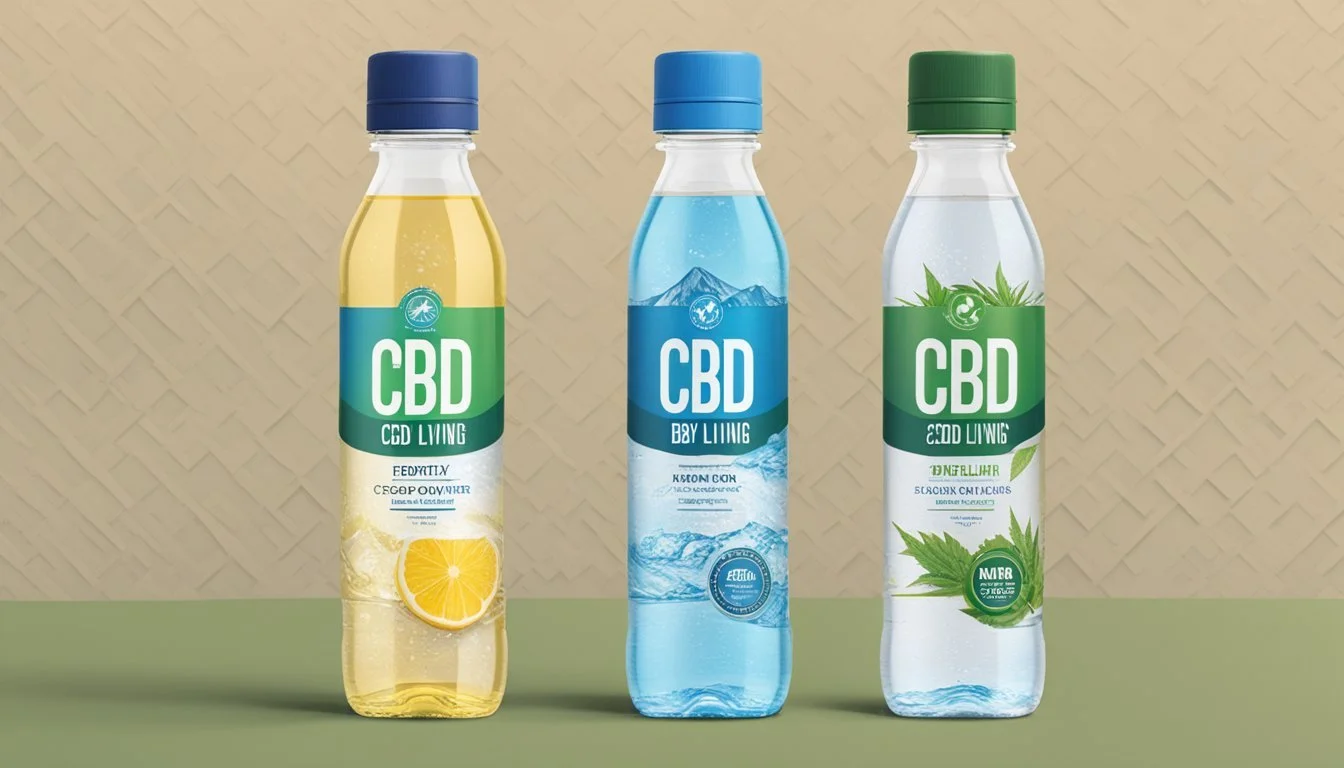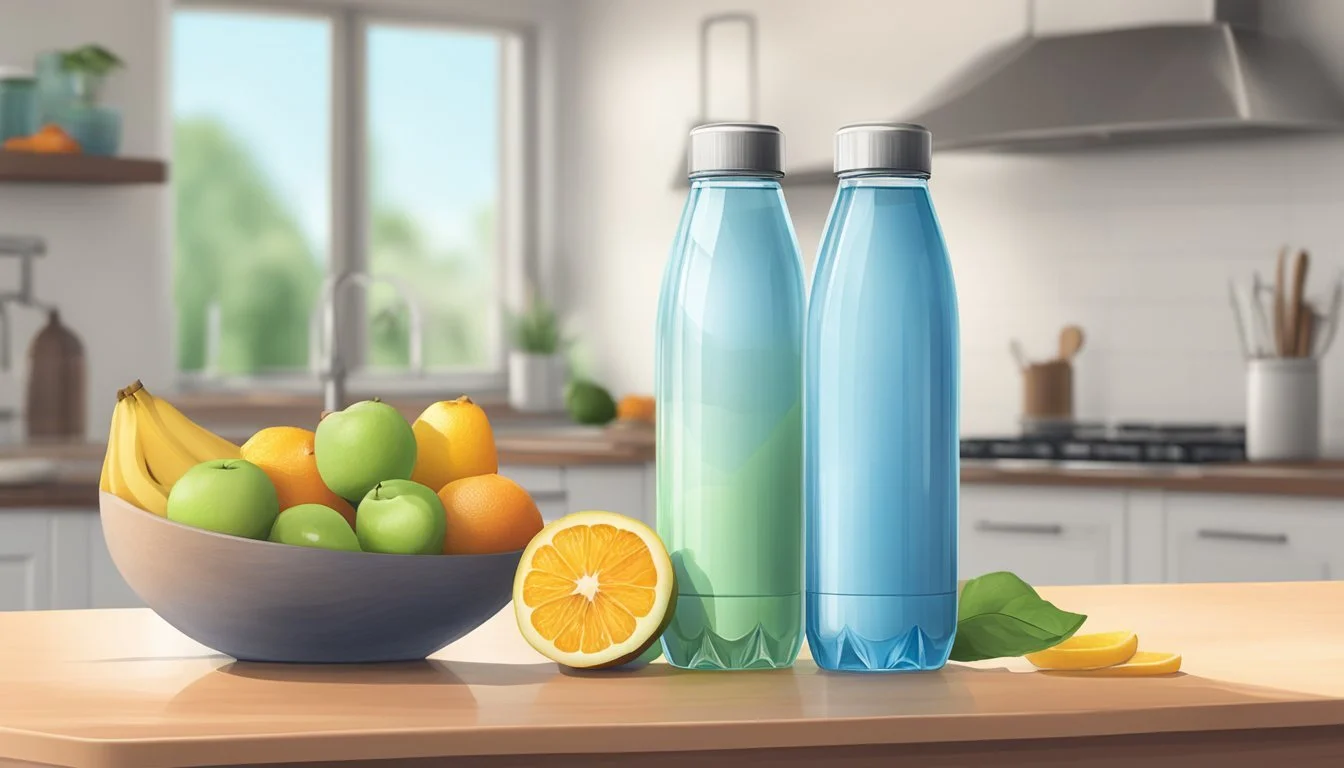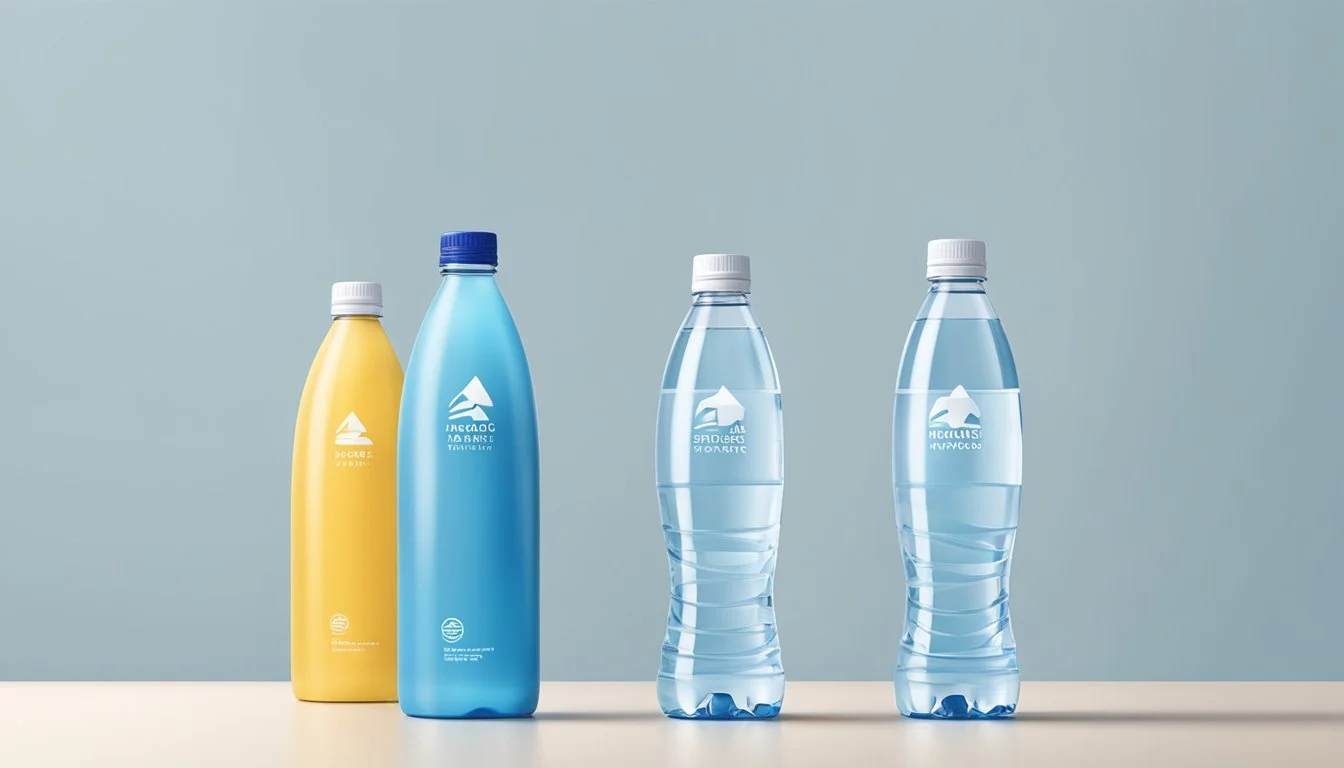Zephyrhills vs. CBD Living
Which Bottled Water Is Superior?
Choosing the right bottled water can be challenging, especially with emerging options like CBD Living Water entering the market. Zephyrhills, derived from natural springs, boasts essential minerals like calcium, magnesium, and potassium that benefit health. On the other hand, CBD Living Water infuses cannabidiol (CBD) into its water, potentially offering therapeutic benefits such as reduced anxiety and inflammation.
For those looking for naturally sourced, mineral-rich water, Zephyrhills provides a reliable choice, known for its purity and balanced mineral content. Conversely, CBD Living Water offers a unique fusion of hydration and wellness through its CBD infusion, attracting consumers interested in the purported health benefits of cannabidiol.
When deciding between Zephyrhills and CBD Living Water, consumers should consider their priority: natural mineral benefits or the therapeutic potential of CBD. Each product serves distinct health-related preferences, making the choice highly dependent on individual needs and lifestyle.
Overview of Bottled Water
Bottled water has become a popular choice for many seeking convenient and safe hydration.
Types of Bottled Water:
Spring Water: Sourced from natural springs, often contains minerals beneficial for health.
Purified Water: Undergoes processes like reverse osmosis and distillation to remove impurities.
Mineral Water: Contains a significant level of natural minerals and is often sourced from mineral springs.
Benefits:
Hydration: Ensures reliable access to clean drinking water, crucial for bodily functions.
Taste: Many consumers prefer bottled water due to its consistent taste, free from chlorine and impurities.
Quality Control: Subjected to stringent quality standards and regular testing, ensuring safety.
Minerals and Their Roles:
Calcium: Important for bones and teeth.
Magnesium: Supports muscle and nerve function.
Potassium: Helps balance electrolytes in the body.
Health Considerations:
Microplastics: Potential contamination from plastic bottles, though the long-term effects are still being studied.
Environmental Impact: Plastic waste from bottles can contribute to pollution; recycling can mitigate some effects.
Comparison Criteria:
When choosing bottled water, factors like taste, mineral content, purification process, and environmental impact are essential. Understanding the advantages and potential drawbacks of each type can help consumers make informed decisions.
Understanding Zephyrhills
Zephyrhills is a brand known for its natural spring water, sourced from pristine springs in Florida. The water undergoes a rigorous treatment process to ensure high purity and safety, and the brand boasts a long history with a strong reputation for quality.
Natural Spring Water and Its Source
Zephyrhills draws its water from natural springs located in Florida. These springs tap into aquifers, which are underground layers of water-bearing rock that provide fresh, naturally filtered water. The region's geology contributes to the mineral content of Zephyrhills water, making it rich in essential minerals like calcium, magnesium, and potassium. These minerals not only enhance the taste but also offer health benefits.
Treatment Process and Purity
The water from Zephyrhills springs undergoes a comprehensive treatment process. This includes multiple filtration stages to remove impurities and ensure the water's safety. Advanced techniques like micron filtration and UV light treatment are used to eliminate any harmful organisms without affecting the natural minerals. This meticulous process guarantees that consumers receive clean, pure, and safe drinking water.
Zephyrhills Brand History and Reputation
Zephyrhills has been a trusted name in bottled water since its founding in 1964. Over the decades, it has grown from a local business in Florida to a widely recognized brand. Owned by Nestlé Waters North America, Zephyrhills continues to uphold its commitment to quality and sustainability. Its reputation is built on consistently delivering fresh, pure spring water and maintaining high standards in every bottle.
Understanding CBD Living
CBD Living is a brand that specializes in CBD-infused products, particularly focusing on enhancing health and wellness through innovative solutions. CBD Living's flagship product, CBD Living Water, combines hydration with CBD benefits, leveraging advanced technology to improve absorption rates.
Innovation in Hydration: CBD Water
CBD Living Water is infused with 10 mg of organic CBD per bottle. The company uses nanotechnology to create smaller CBD particles, which enhance absorption and effectiveness. This methodology allows the CBD to enter the bloodstream more efficiently than traditional methods.
Benefits:
Improved absorption: The use of nanotechnology ensures that the body can absorb CBD more effectively.
Organic ingredients: 100% organic hemp CBD extracts are used, ensuring product purity.
Long-term hydration: Combining the natural benefits of water with CBD's health properties.
CBD Living Water caters to a wellness-oriented lifestyle, incorporating natural antioxidants and supporting overall health. To ensure quality, the brand provides a certificate of analysis (COA) for transparency and consumer trust. This approach aligns with FDA regulations, making it a reliable option in the bottled water market.
Comparative Analysis of Water Quality
Zephyrhills sources its water from natural springs in Florida. This spring water is appreciated for its purity and natural mineral content, which includes calcium, magnesium, and potassium. Electrolytes in Zephyrhills contribute to fluid balance and energy. The water undergoes minimal filtration to maintain the natural minerals, ensuring a refreshing taste.
CBD Living uses reverse osmosis during its filtration process, which removes most contaminants and impurities. This process results in highly pure water. CBD Living enhances its water with CBD and often includes electrolytes like potassium and magnesium for additional health benefits. The water boasts a clean taste due to thorough purification.
Attribute Zephyrhills CBD Living Source Natural springs in Florida Reverse osmosis filtration Mineral Content Natural (calcium, magnesium) Added minerals and CBD Electrolytes Naturally occurring Added; includes potassium, magnesium Filtration Process Minimal filtration Reverse osmosis Purity Maintains natural mineral balance High due to extensive filtration
The ideal pH balance for drinking water is between 6.5 and 8.5. Zephyrhills often falls within this range naturally due to its spring source. CBD Living sometimes opts for an alkaline formulation, which may have a pH above 7, aimed at promoting various health benefits.
Each brand's water offers unique benefits based on their mineral content and filtration processes. Zephyrhills prides itself on its natural spring source, while CBD Living emphasizes purity and added benefits.
The Taste Factor
When comparing the taste of Zephyrhills and CBD Living bottled waters, distinct differences are noted.
Zephyrhills, a natural spring water, is often described as having a crisp and refreshing taste. The water comes from carefully selected springs, contributing to its natural and pure flavor. Its balanced pH levels make it a popular choice for many consumers.
CBD Living offers an enhanced water experience with its infusion of CBD. Not only does this add potential wellness benefits, but it also affects the palate. Some drinkers may notice a slight difference in taste due to the presence of CBD and minerals.
Brand Taste Description Source Zephyrhills Crisp, refreshing, pure Natural springs CBD Living Slightly mineral, smooth, subtle CBD taste Enhanced with CBD
The alkaline properties of CBD Living water may appeal to those who prefer an alkaline diet. This attribute can subtly influence its taste profile, offering a smooth and clean finish that some users find appealing.
Meanwhile, Zephyrhills focuses more on purity and natural taste. It lacks any notable aftertaste, making it a straightforward, clean option for hydration.
In summary, taste preferences will largely depend on individual palates and whether they value the natural spring essence of Zephyrhills or the slightly altered, alkaline-infused flavor of CBD Living.
Both offer distinct experiences, making the choice between them a matter of personal preference.
Health and Hydration
When comparing Zephyrhills and CBD Living, it's important to evaluate their impact on health and hydration.
Zephyrhills is natural spring water. It contains essential minerals like calcium, magnesium, and potassium. These minerals contribute to overall health by supporting various bodily functions, such as nerve transmission and muscle function.
CBD Living Water is infused with cannabidiol (CBD), which has gained attention for potential health benefits. CBD is believed to have anti-inflammatory and antioxidant properties, which might support overall well-being. Each bottle typically contains a specified amount of CBD, promising added benefits beyond basic hydration.
Alkalinity plays a role in hydration. Zephyrhills typically has a pH range that falls within the ideal drinking water bracket of 6.5 to 8.5. This ensures it supports the body's natural pH balance. CBD Living Water also often aims for a similar pH range, though specific values can vary by product.
Both waters rehydrate effectively, but the presence of CBD in CBD Living Water provides an additional element for those looking for potential health benefits beyond standard hydration. The inclusion of antioxidants from CBD may help combat oxidative stress.
Electrolytes are crucial for hydration and body functions. Zephyrhills has naturally occurring electrolytes, which are vital for maintaining fluid balance. It supports nerve signaling and muscle contractions.
Table Comparison
Attribute Zephyrhills CBD Living Water Source Natural Spring Infused with CBD Key Minerals Calcium, Magnesium Cannabidiol (CBD) pH Range 6.5 - 8.5 Varies, often similar Additional Benefits Naturally occurring minerals Anti-inflammatory, Antioxidant
Both replace essential electrolytes, serving to keep the body replenished and balanced. The choice between the two largely lies in individual health goals and preferences.
Environmental Impact and Sustainability
Zephyrhills and CBD Living water brands have differing impacts on the environment.
Plastic Waste:
Zephyrhills uses plastic bottles, raising concerns about plastic waste and microplastics.
CBD Living employs plastic containers too, contributing to waste and pollution.
Recyclable Materials:
Both brands offer bottles that are recyclable.
The efficiency of recycling programs varies by location, affecting actual recycling rates.
Sourcing and Processing:
Sourcing of water affects their carbon footprint.
CBD Living sources water locally when possible, reducing transport emissions.
Zephyrhills sources from Florida springs, which may involve fewer transportation emissions for nearby markets.
Sustainability Efforts:
Zephyrhills has committed to improving its environmental policies.
They actively engage in water stewardship programs to protect local springs.
CBD Living focuses on minimizing environmental impact through sustainable practices.
Carbon Footprint:
Transportation of water products impacts carbon emissions.
Both brands aim to reduce their carbon footprint through localized sourcing and efficient logistics.
The environmental impact and sustainability practices differ between Zephyrhills and CBD Living, each making strides to enhance their ecological responsibility.
Packaging and Convenience
Zephyrhills and CBD Living offer distinct approaches to packaging that cater to different preferences and needs.
Zephyrhills uses traditional plastic bottles, which many find convenient due to their lightweight nature and portability. These bottles are easy to carry, reseal, and fit into car cup holders, gym bags, and backpacks.
In contrast, CBD Living utilizes plastic as well, but also offers boxed water options. Boxed water is emerging as a more environmentally-conscious alternative to plastic bottles. Made primarily from paper, these boxes are recyclable and aim to reduce plastic waste.
List of Key Packaging Features:
Zephyrhills:
Traditional plastic bottles
Easy to carry
Convenient for travel and daily use
CBD Living:
Combination of plastic and boxed water
Boxed water is more eco-friendly
Recyclable packaging
While plastic bottles are widespread and familiar, boxed water from CBD Living aligns with sustainability efforts, appealing to environmentally-conscious consumers. Both brands prioritize convenience but do so through different packaging strategies.
Ultimately, the choice between Zephyrhills and CBD Living might hinge on individual preferences regarding packaging and environmental impact, with Zephyrhills focusing on easy portability and CBD Living offering a greener packaging option.
Brand Proposition and Consumer Lifestyle
Zephyrhills and CBD Living each present distinct brand propositions tailored to different consumer lifestyles and preferences.
Zephyrhills offers its water as naturally sourced spring water from Florida. It appeals to those who prioritize a connection to nature and value the purity of natural spring water. The imagery of untouched, pristine springs resonates deeply with wellness enthusiasts.
CBD Living, on the other hand, integrates cannabidiol (CBD) into its water. This brand positions itself as a wellness innovator, targeting consumers with an interest in alternative health and holistic lifestyles. The inclusion of CBD suggests benefits such as relaxation and stress relief.
Lifestyle Preferences:
Zephyrhills: Ideal for consumers who enjoy outdoor activities, embrace a clean and straightforward approach to hydration, and appreciate local, natural resources.
CBD Living: Appeals to a more niche market focused on health supplements, alternative wellness practices, and those seeking the potential benefits of CBD.
Brand Proposition:
Zephyrhills:
Source: Natural springs
Image: Clean, pure, natural
Target: General wellness enthusiasts, eco-conscious consumers
CBD Living:
Source: Purified water with added CBD
Image: Innovative, health-focused, modern
Target: Health and wellness seekers, alternative medicine users
By understanding these brand propositions, consumers can better align their bottled water choices with their personal lifestyle and wellness goals. The choice between Zephyrhills and CBD Living ultimately depends on individual preferences and the specific benefits each consumer is seeking.
Water Sources and Sourcing Ethics
Zephyrhills bottled water is sourced from natural springs in Florida. The company emphasizes using sustainable practices to manage their spring sources, aiming to minimize environmental effects on local groundwater levels. Spring waters are favored for their naturally occurring minerals which contribute to taste and quality.
CBD Living water sources its water from municipal supply before incorporating nanotechnology to infuse it with CBD and alkaline properties. This process includes extensive filtration and purification to ensure purity. Unlike Zephyrhills, it doesn't specifically rely on spring waters or aquifers.
Ethical sourcing is a key consideration. Zephyrhills is committed to sustainable spring source management to mitigate environmental impacts, ensuring the water collection does not deplete local resources. They take daily samples to monitor quality and maintain a balance in the ecosystem.
CBD Living focuses on advanced filtration and purification rather than natural sourcing. Their ethical considerations involve rigorous quality control and ensuring their CBD infusion meets health and safety standards. This modern approach contrasts with the traditional spring-sourced methodology of Zephyrhills.
In comparing the two, their sourcing ethics highlight different priorities: Zephyrhills prioritizes environmental sustainability, whereas CBD Living emphasizes technological advancement and product purity. Both methods present unique benefits and challenges, reflecting their distinct source and sourcing ethics strategies.
Comparing Economic Values
Price
Zephyrhills typically offers competitive pricing within the bottled water market, often found at around $0.12 to $0.15 per fluid ounce. CBD Living, due to its infused cannabidiol (CBD) content, tends to be priced higher, usually ranging from $0.20 to $0.25 per fluid ounce.
Value for Money
When evaluating value for money, it’s essential to consider what consumers get beyond just hydration. Zephyrhills, sourced from natural springs, appeals to those preferring natural spring water and budget-friendly options. CBD Living, with its added CBD, caters to consumers looking for potential wellness benefits alongside hydration.
Market Demand
Market demand for Zephyrhills remains robust, driven by brand trust and affordability. CBD Living targets a niche market, particularly health-conscious individuals and those interested in the potential therapeutic effects of CBD. This often results in a smaller, but highly dedicated consumer base.
In summary, Zephyrhills focuses on affordability and natural sourcing, while CBD Living emphasizes enhanced wellness features, reflected in its higher price and specialized market appeal.
More About Zephyrhills
Core Hydration vs Zephyrhills: Which Bottled Water is Better?
Icelandic Glacial vs Zephyrhills: Which Bottled Water is Better?
Mountain Valley Spring Water vs Zephyrhills: Which Bottled Water is Better?
Nestle Pure Life vs Zephyrhills: Which Bottled Water is Better?
Poland Spring vs Zephyrhills: Which Bottled Water is Better?
San Pellegrino vs Zephyrhills: Which Bottled Water is Better?
Zephyrhills vs Aqua Carpatica: Which Bottled Water is Better?
Zephyrhills vs Cascade Mountain: Which Bottled Water is Better?
Zephyrhills vs Crystal Geyser: Which Bottled Water is Better?
Zephyrhills vs Hawaii Volcanic: Which Bottled Water is Better?
Zephyrhills vs Hawaiian Springs: Which Bottled Water is Better?
Zephyrhills vs Kirkland Signature: Which Bottled Water is Better?
Zephyrhills vs Purely Sedona: Which Bottled Water is Better?
Zephyrhills vs Richard's Rainwater: Which Bottled Water is Better?
Zephyrhills vs Solan de Cabras: Which Bottled Water is Better?
Zephyrhills vs Talking Rain AQA: Which Bottled Water is Better?
Zephyrhills vs Whole Foods 365: Which Bottled Water is Better?
Zephyrhills vs Whole Foods Italian Still Mineral water: Which Bottled Water is Better?
More About CBD Living
Aqua Carpatica vs CBD Living: Which Bottled Water is Better?
Cascade Mountain vs CBD Living: Which Bottled Water is Better?
Core Hydration vs CBD Living: Which Bottled Water is Better?
Crystal Geyser vs CBD Living: Which Bottled Water is Better?
Hawaii Volcanic vs CBD Living: Which Bottled Water is Better?
Hawaiian Springs vs CBD Living: Which Bottled Water is Better?
Icelandic Glacial vs CBD Living: Which Bottled Water is Better?
Kirkland Signature vs CBD Living: Which Bottled Water is Better?
Mountain Valley Spring Water vs CBD Living: Which Bottled Water is Better?
Nestle Pure Life vs CBD Living: Which Bottled Water is Better?
Richard's Rainwater vs CBD Living: Which Bottled Water is Better?
San Pellegrino vs CBD Living: Which Bottled Water is Better?
Solan de Cabras vs CBD Living: Which Bottled Water is Better?
Talking Rain AQA vs CBD Living: Which Bottled Water is Better?
Whole Foods 365 vs CBD Living: Which Bottled Water is Better?
Whole Foods Italian Still Mineral water vs CBD Living: Which Bottled Water is Better?








